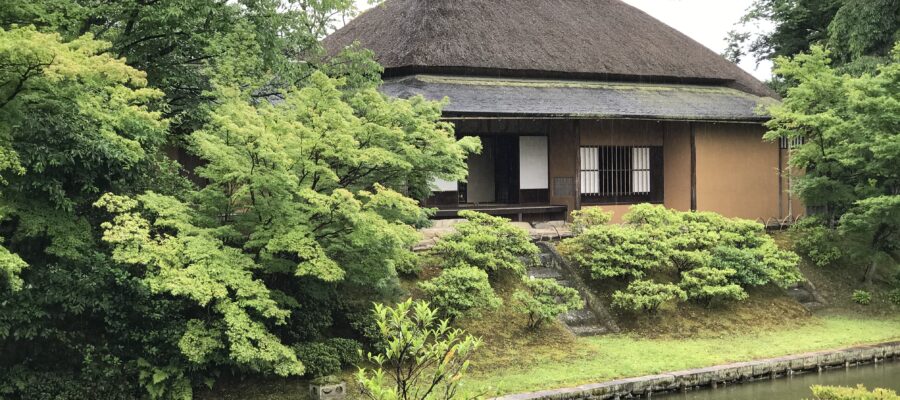土橋を渡って中島を巡る
池の中に浮かぶ中島の1つを渡ります。今回は石橋ではなく、土橋です。すごく低いですが橋の両サイドに段差があるので、少しリラックスして歩けます。参加者一同、傘を差しながら悠々と渡っていきました。
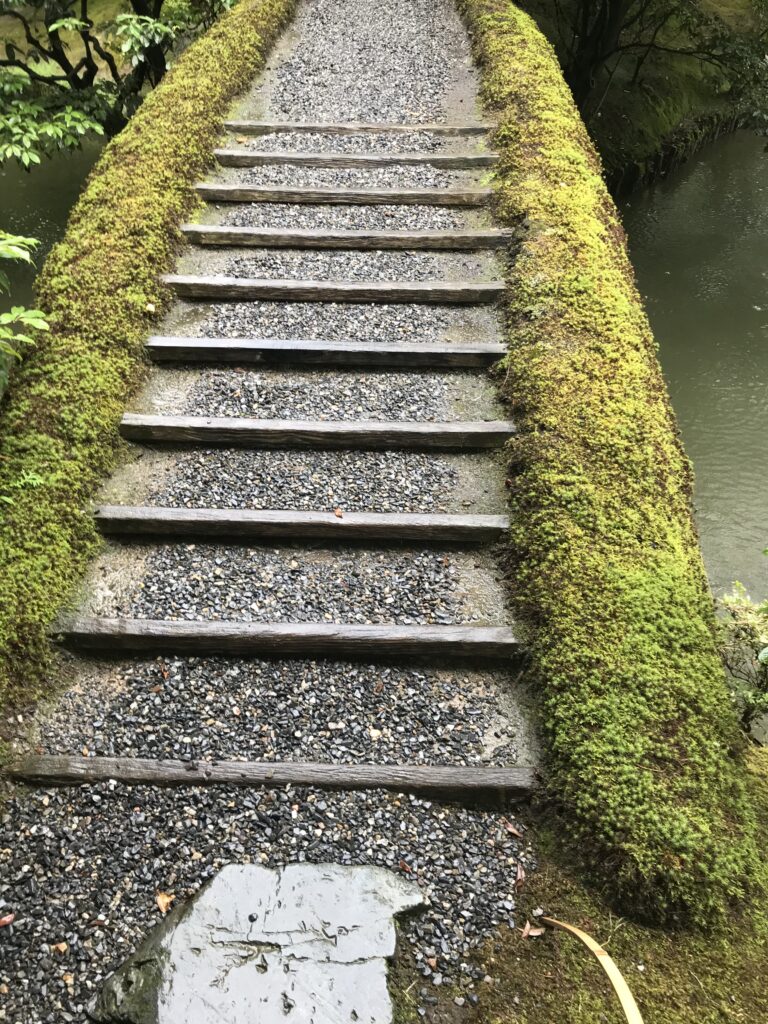
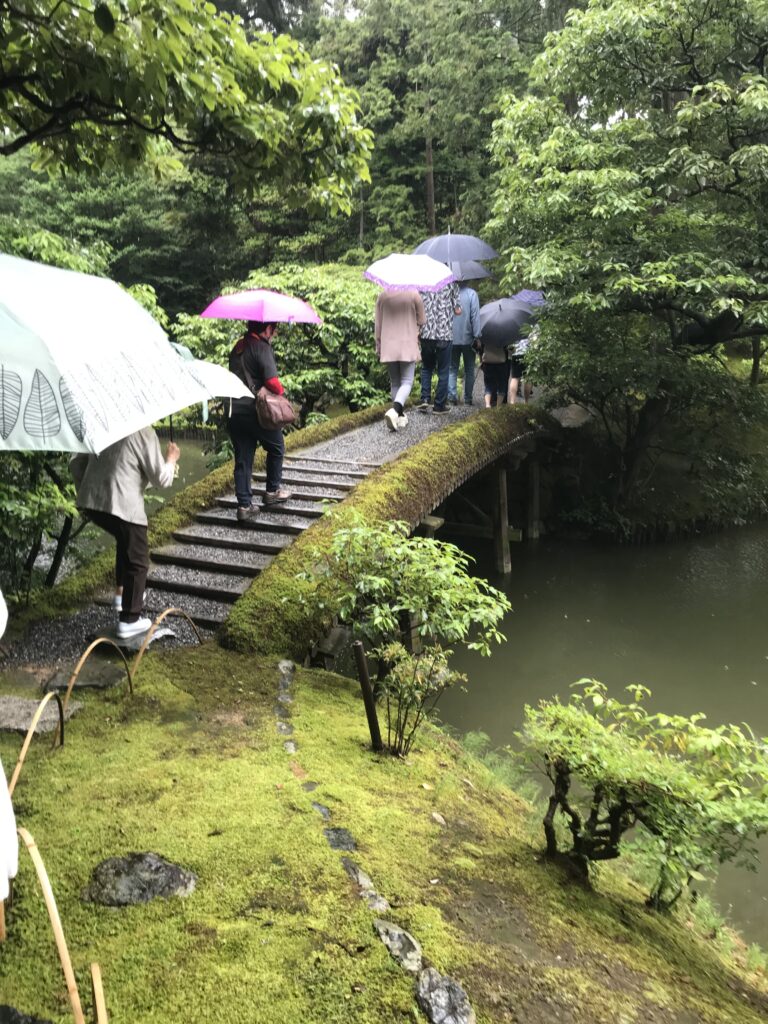
小高い所に建つ賞花亭
少し小高くなったところを上ると、賞花亭に着きます。ここは苑内で最も高い位置にあり、夏の暑さしのぐために利用されたそうです。池の上から風が流れてくるのかもしれません。細かい所に目が行ってしまうのですが、床面も小石を1個、2個と組み合わせて埋め込んだデザインになっています。
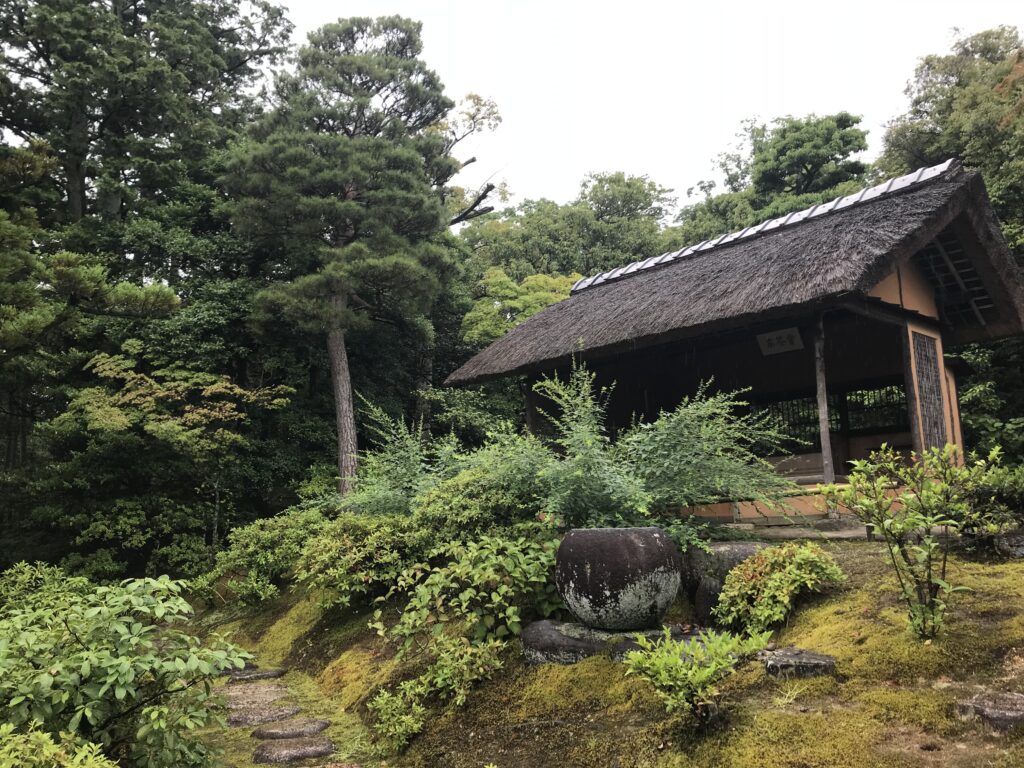
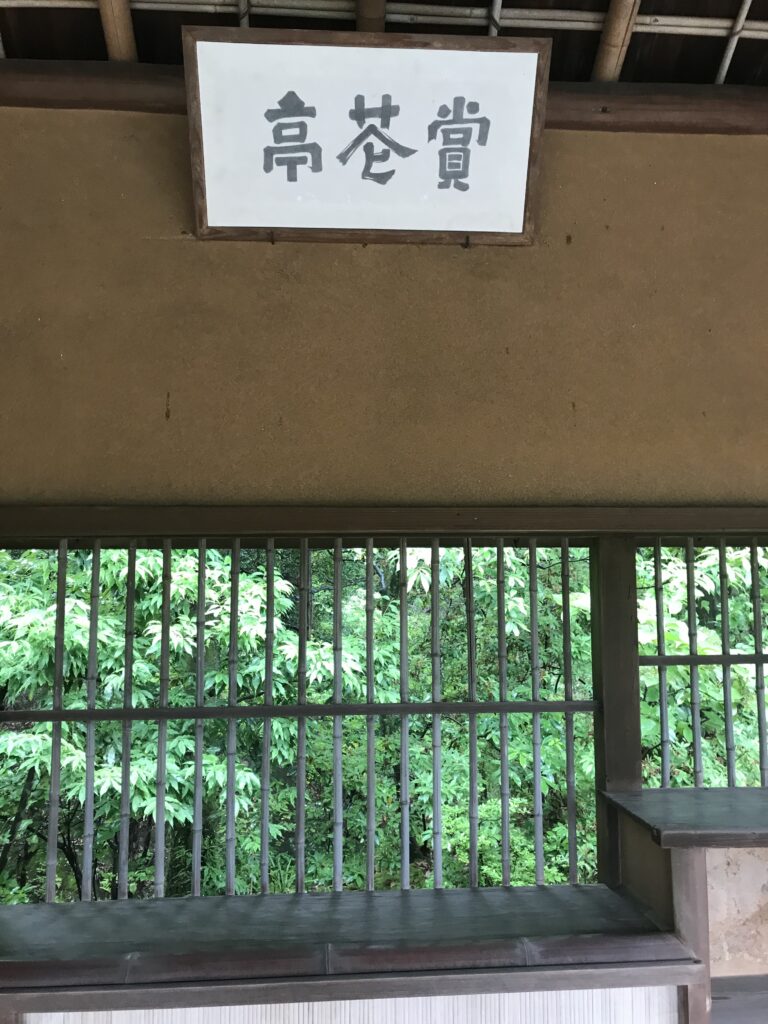
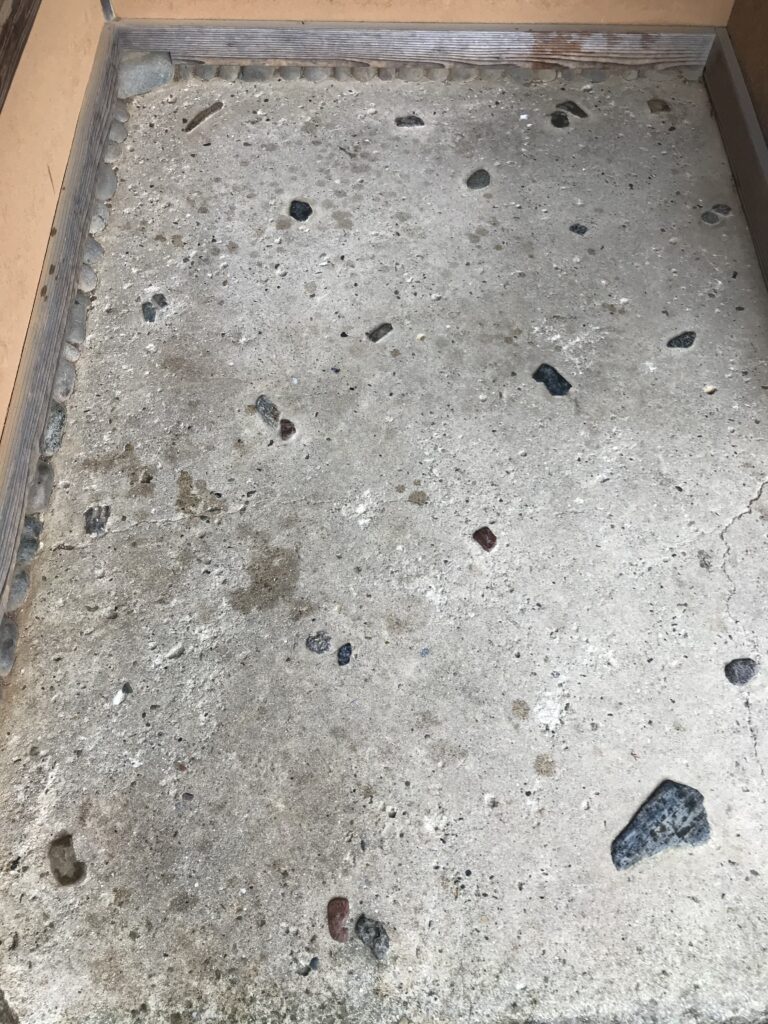
賞花亭を出ると、池の真ん中にある2つの島が、それぞれ高さの異なる橋で連結されているのが見えます。また、盛り上がった土橋の道は古書院に続いています。宮内庁の管轄の庭園ですので、我々のグループの後ろを少し離れて警備の方が1名追跡してこられます。写真を撮る際に、その方が隅っこに入ってしまうので、撮影に苦労します。
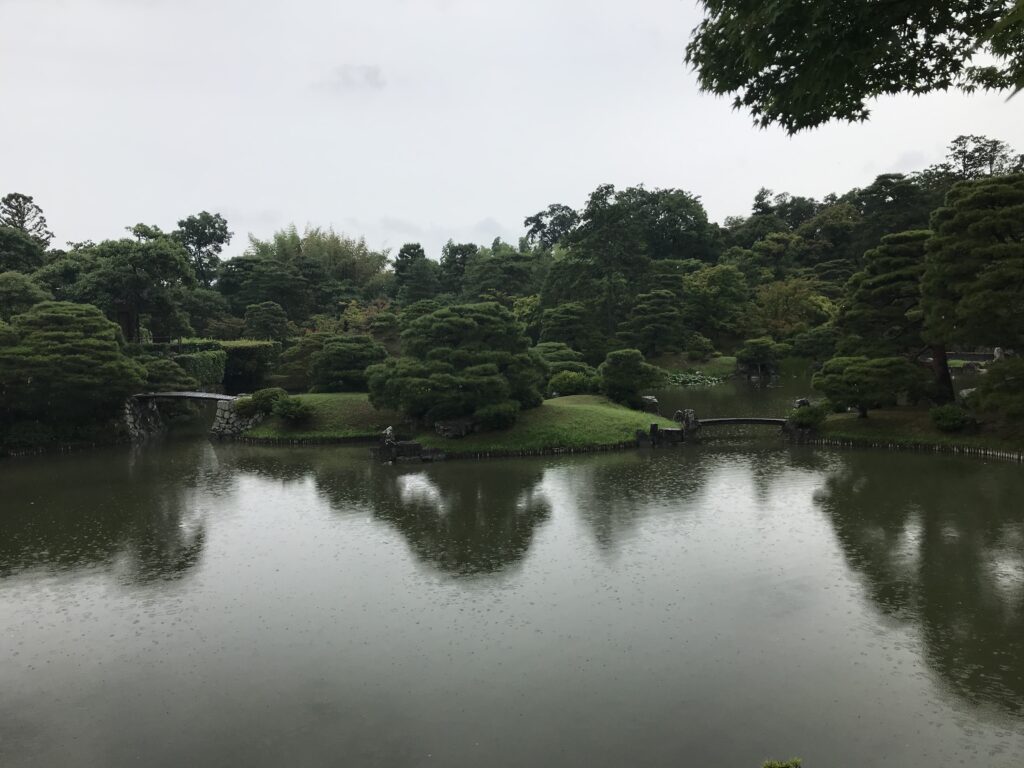
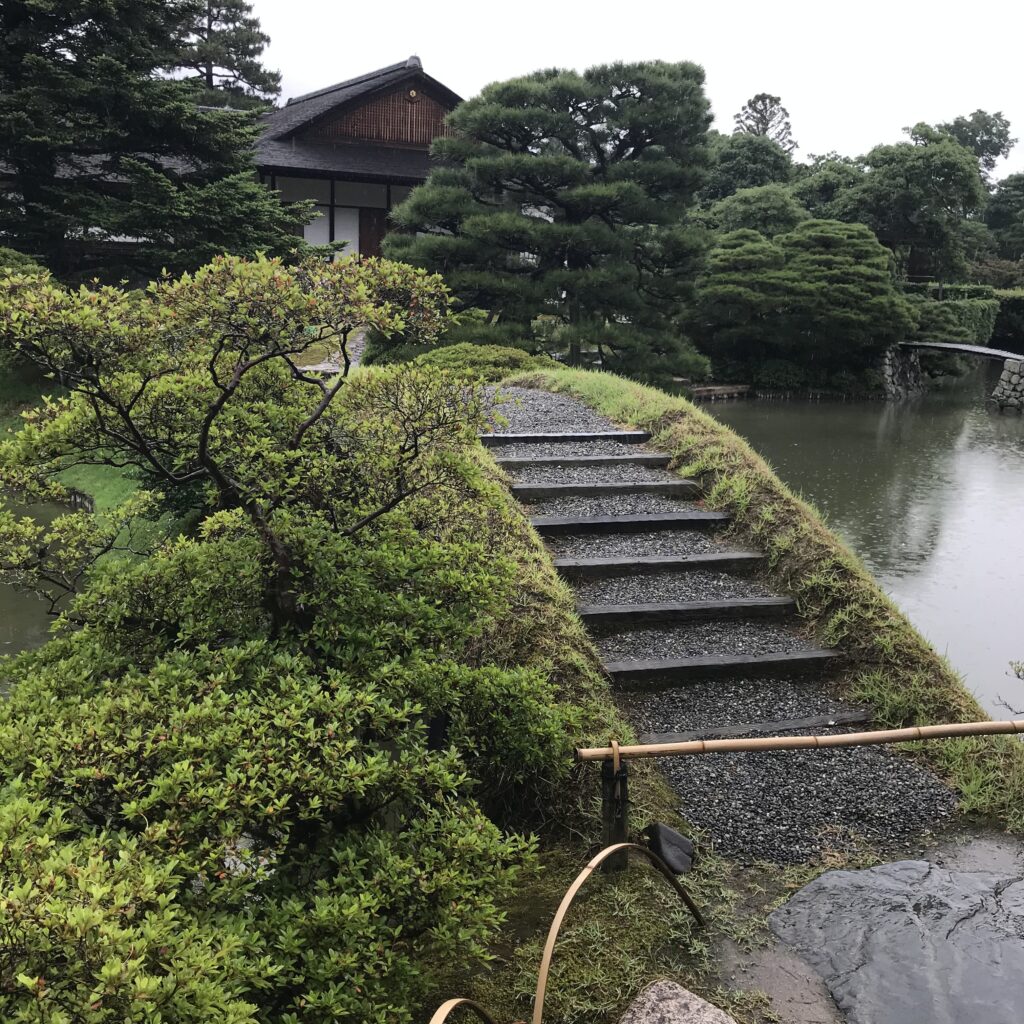
御宸筆が美しい園林堂の扁額
さて、今居る中島の最終地点は園林堂です。この建物は仏道の雰囲気がありますが、安置されている仏像はないそうです。ここに掛かっている扁額は、後水尾上皇の御宸筆です。力強く、かつ品のある素晴らしい字です。当方は字が下手なので、このような字を書く人を無条件に尊敬していまします。
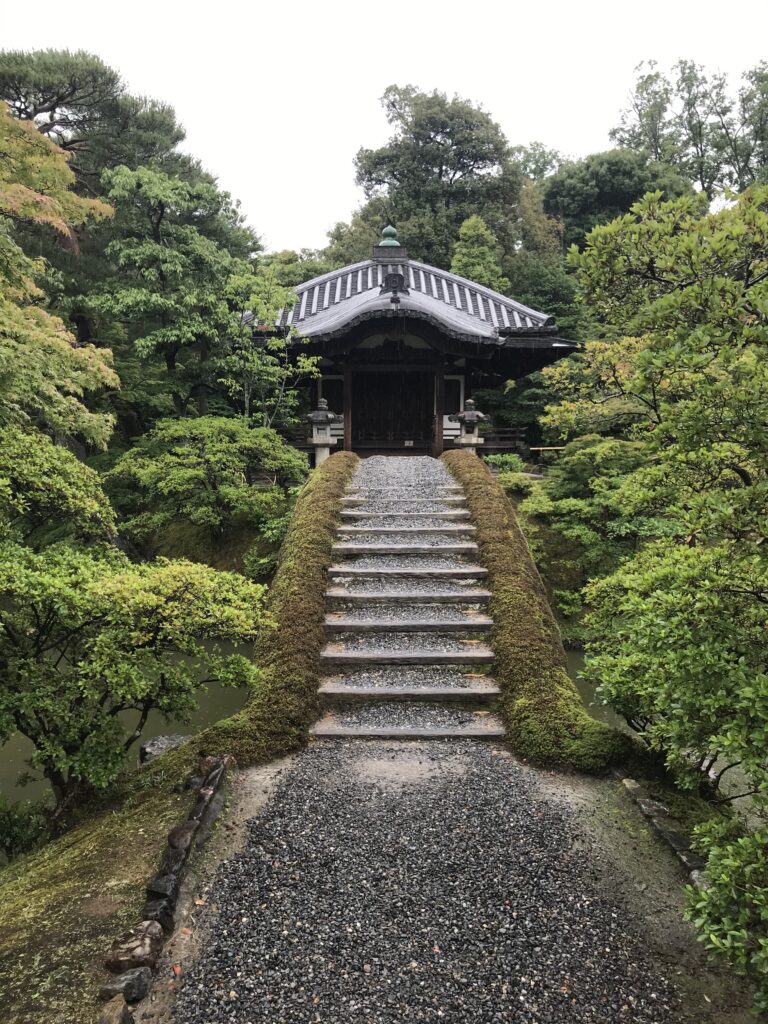
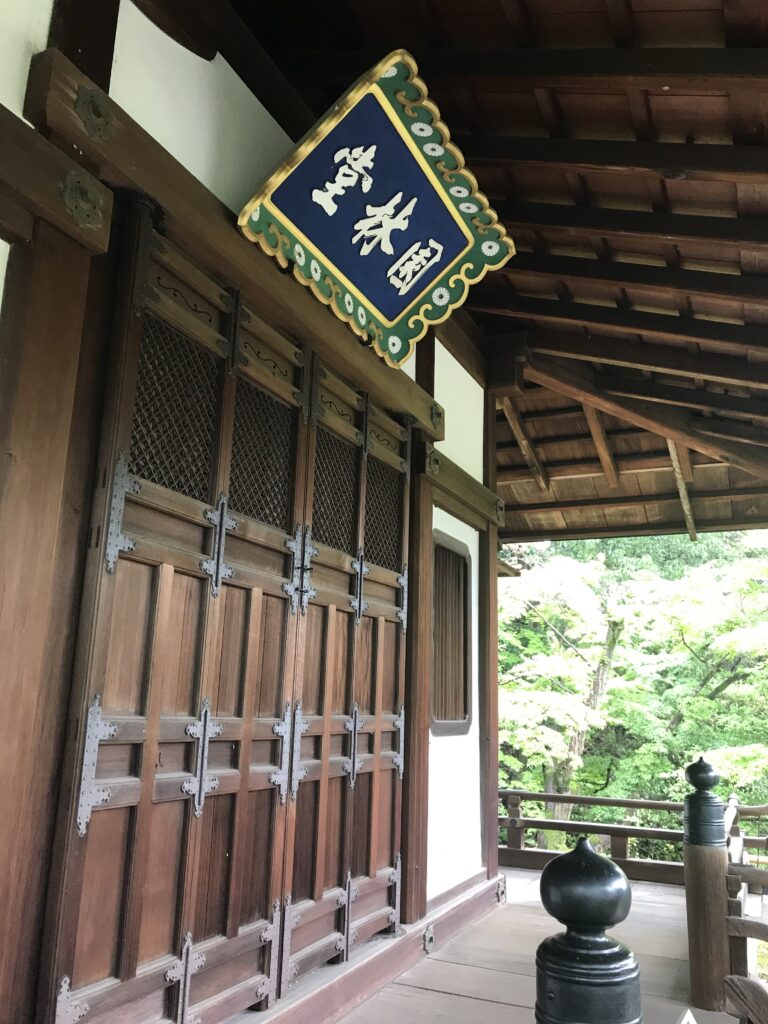
扁額の文字も笑う笑意軒
次は、田舎風茶室の笑意軒です。茅葺の屋根ですが、杮葺の廂が付いています。写真で確認できるでしょうか。こちらの扁額は曼殊院の良恕法親王が書かれたものです。字自体が愉快に笑っているようで楽し気な雰囲気が伝わってきます。
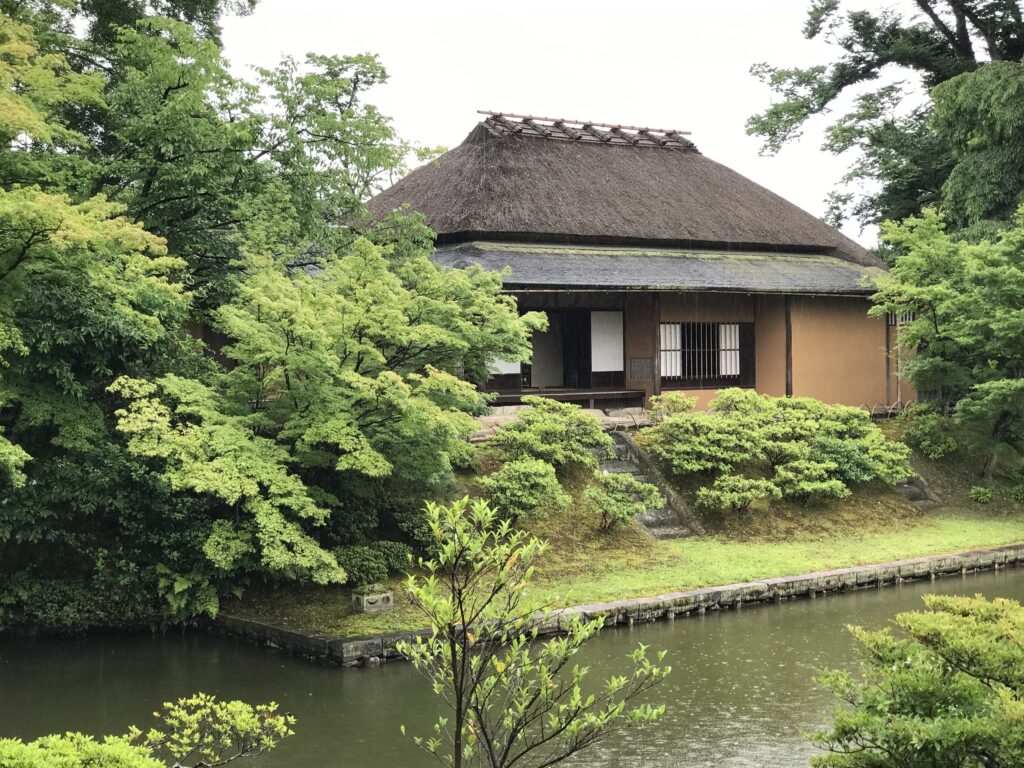
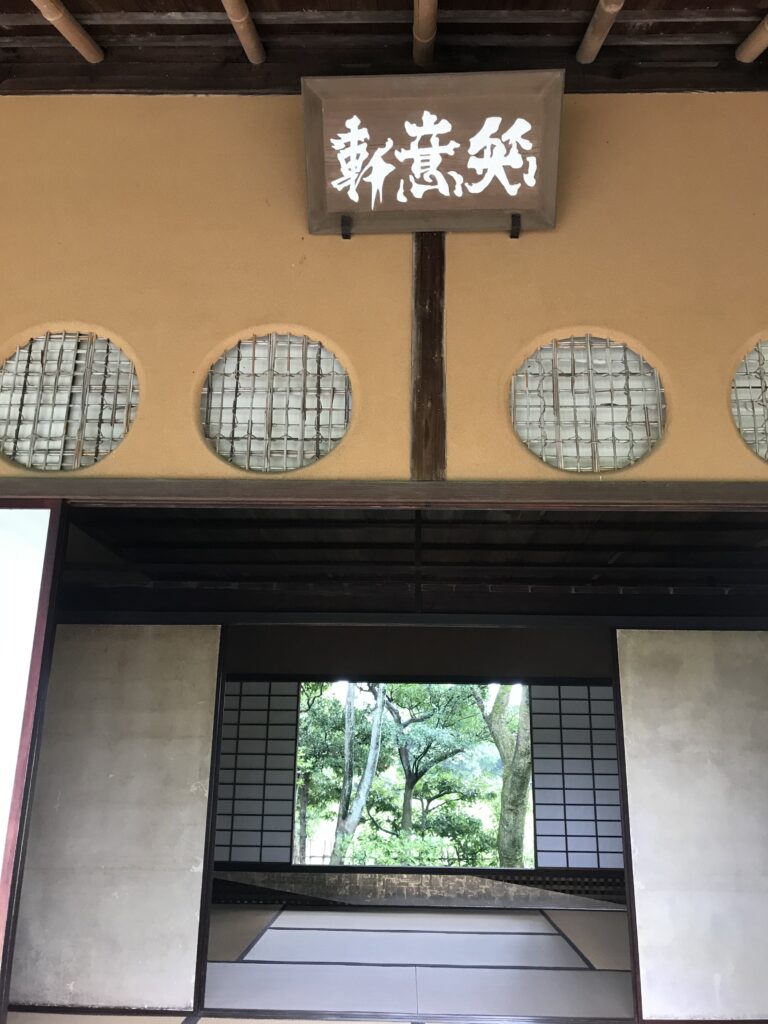
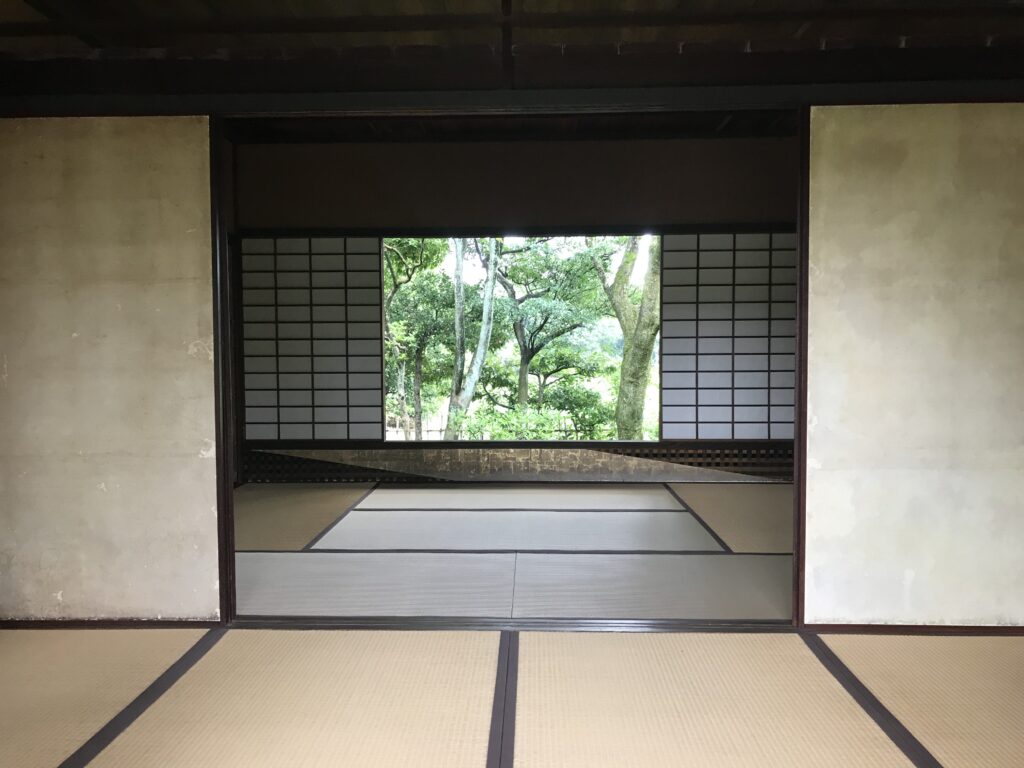
田舎風を意識してか、笑意軒の前の延段は真行草の草に当たり、自然石のみで構成されていて、非常にカジュアルな雰囲気です。また、笑意軒に来る途中、三角形の石で構成された三角灯篭を見つけました。見た目が若干不安定なのですが、その分、心配になって目につきます。(つづく)
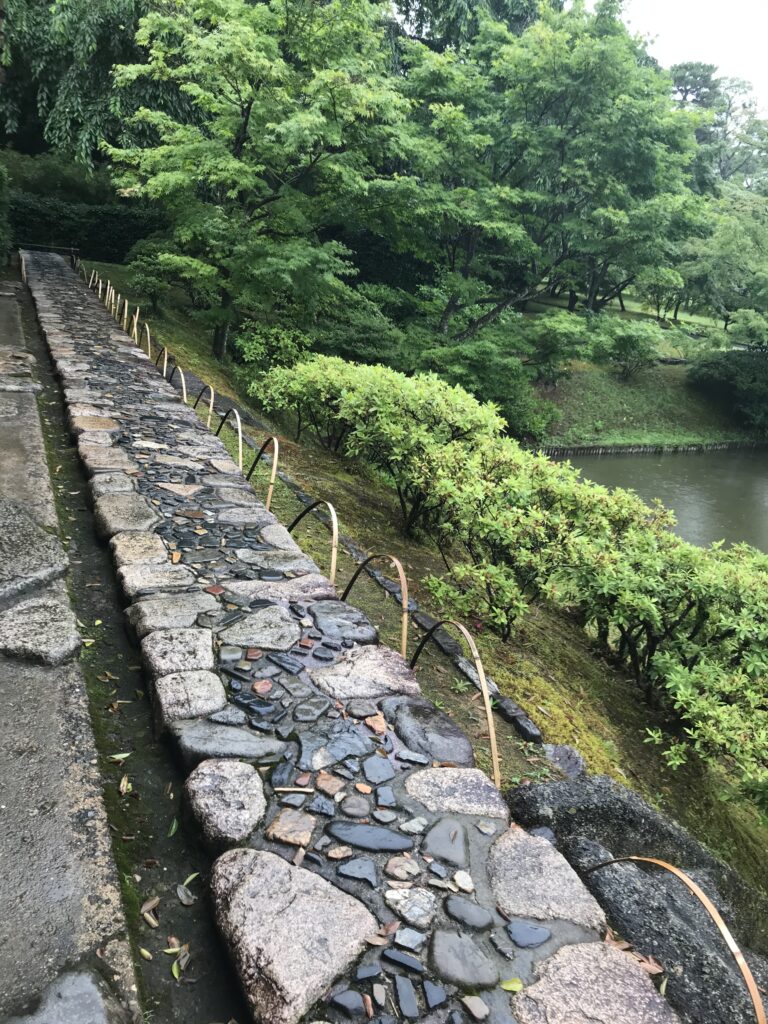
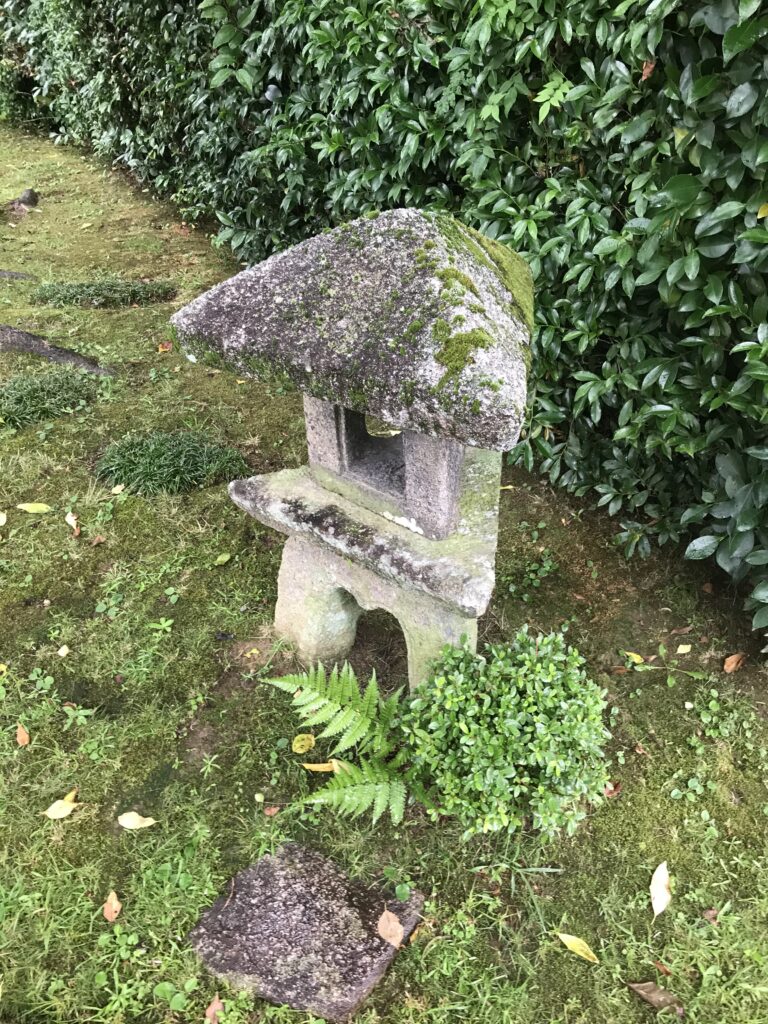
桂離宮が紹介されている書籍
BANARAISHAから発行されている「JAPANESE GARDENS(日本庭園)」に桂離宮が詳述されています。日本語と英語併記ですので、英語の庭園用語あるいは表現を覚えるのに最適です。
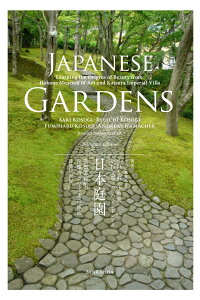
価格:1,320円
(2021/6/1 14:28時点)
感想(0件)
Katsura Rikyu ② from Shoka-tei to Shoi-ken (English)
Crossing an earthen bridge and touring the Naka-shima island
I crossed one of the islands floating in the pond. This time, it was not a stone bridge, but a dirt bridge. It was very low, but there were steps on both sides of the bridge, so I could relax a bit. All the participants crossed the bridge with ease, holding umbrellas.
The Shoka-tei Pavilion on a small hill
Climbing up a little higher, I arrived at the Shoka-tei Pavilion. This is the highest point in the garden and was used to shelter from the summer heat. The breeze might be coming from the pond. The floor is also designed with combinations of one or two pebbles embedded in it.
As I exited the Shoka-tei Pavilion, I saw two islands in the middle of the pond, each connected by a bridge of different heights. Also, the path of the raised earthen bridge leads to the Koshoin. Since the garden is under the jurisdiction of the Imperial Household Agency, there was one security guard following our group a short distance behind. It was difficult to take pictures because he would be in the corner of pictures when I took pictures.
The beautiful Emperor’s calligraphy on the plaque of Enrindo
The last stop on the island I was on was Sonrindo. This building had the atmosphere of a Buddhist temple, but there was no statue of Buddha enshrined in it. The plaque hanging there was in the handwriting of Emperor Gomizuno. The handwriting was both powerful and elegant. I am not a very good handwriter, so I have unconditional respect for people who can write like this.
The words on the plaque were also funny.
Next was the country-style tea house, Shoi-ken. It had a thatched roof but with shingles. Can you see it in the photo? The signboard there was written by Prince Ryojo of Manjyuin Temple. The characters themselves seemed to be laughing happily, and I could feel the joyful atmosphere.
Perhaps with the country style in mind, the extended steps in front of Shoi-ken were made up of only natural stones. This extended steps was in casual form and give me a very casual atmosphere. Also, on the way to Shoi-ken, I found a triangular lantern composed of triangular stones. It looks a little unstable, but that makes it worryingly eye-catching. (To be continued)
Katsura Rikyu ② de Shoka-tei à Shoi-ken (Français)
Traverser un pont en terre et visiter l’île de Naka-shima
J’ai traversé une des îles flottant dans l’étang. Cette fois, ce n’était pas un pont de pierre, mais un pont de terre. Il était très bas, mais il y avait des marches des deux côtés du pont, ce qui m’a permis de me détendre un peu. Tous les participants ont traversé le pont avec aisance, en tenant des parapluies.
Le pavillon Shoka-tei sur une petite colline.
En grimpant un peu plus haut, je suis arrivé au pavillon Shoka-tei. C’est le point le plus haut du jardin et il était utilisé pour s’abriter de la chaleur de l’été. La brise pourrait provenir de l’étang. Le sol est également conçu avec des combinaisons d’un ou deux cailloux incrustés.
En sortant du pavillon Shoka-tei, j’ai vu deux îles au milieu de l’étang, chacune reliée par un pont de différentes hauteurs. De plus, le chemin du pont en terre surélevé mène au Koshoin. Comme le jardin est sous la juridiction de l’Agence de la Maison Impériale, il y avait un garde de sécurité qui suivait notre groupe à une courte distance derrière. Il était difficile de prendre des photos car il se trouvait dans le coin des photos lorsque je prenais des photos.
La belle calligraphie de l’Empereur sur la plaque d’Enrindo
Le dernier arrêt sur l’île où je me trouvais était Sonrindo. Ce bâtiment avait l’atmosphère d’un temple bouddhiste, mais il n’y avait aucune statue de Bouddha qui y était enchâssée. La plaque qui y était accrochée était écrite à la main par l’empereur Gomizuno. L’écriture était à la fois puissante et élégante. Je ne suis pas un très bon écrivain, j’ai donc un respect inconditionnel pour les personnes qui peuvent écrire ainsi.
Les mots sur la plaque étaient également amusants.
Ensuite, il y avait la maison de thé de style campagnard, Shoi-ken. Il avait un toit de chaume mais avec des bardeaux. Pouvez-vous le voir sur la photo ? Le panneau d’affichage a été écrit par le prince Ryojo du temple Manjyuin. Les personnages eux-mêmes semblaient rire joyeusement, et je pouvais sentir l’atmosphère joyeuse.
Peut-être dans l’esprit du style campagnard, les marches prolongées devant le Shoi-ken étaient composées uniquement de pierres naturelles. Ces marches prolongées étaient de forme décontractée et m’ont donné une atmosphère très décontractée. En outre, sur le chemin de Shoi-ken, j’ai trouvé une lanterne triangulaire composée de pierres triangulaires. Elle semble un peu instable, mais cela la rend inquiétante et accrocheuse. (A suivre)
